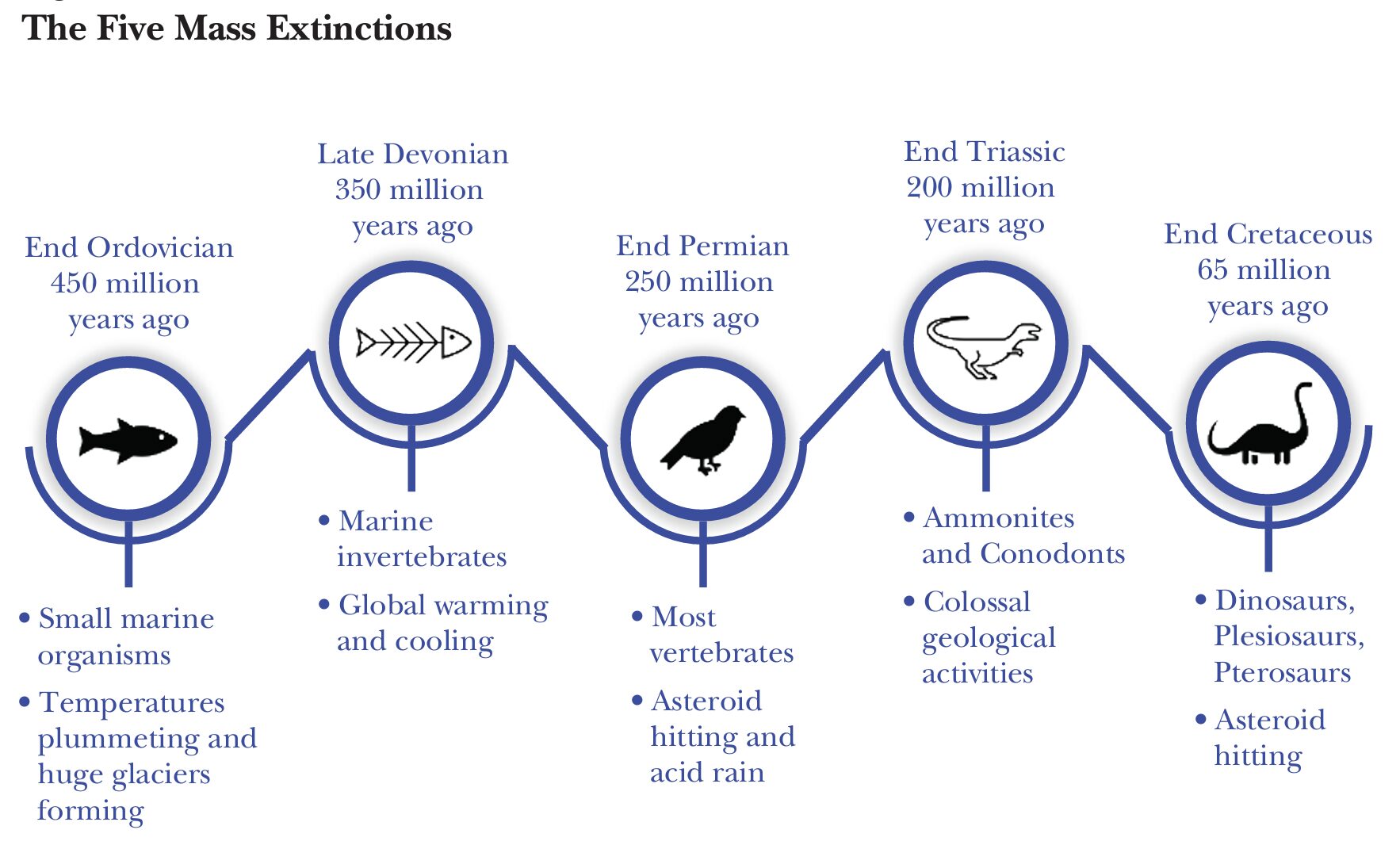According to scientists, the Earth has experienced five mass extinction events, which means that well over 99 percent of species that have ever lived have gone the way of the dodo. Keep that in mind the next time you hear proponents of degrowth advocate in favor of a poorer and, therefore, technologically less-sophisticated future of humanity. So marinated are we in the cult of Mother Gaia that we have forgotten the many ways in which our planet could, completely unaided, put an end to human consciousness. Here are some key scenarios:
- Weakening or reversal of the magnetosphere: Earth’s magnetic field protects us from harmful solar and cosmic radiation. A significant weakening or a complete reversal of the magnetic field could lead to increased radiation reaching the surface, which could cause widespread damage to living organisms and potentially lead to mass extinctions.
- Supervolcano eruptions: Supervolcanoes, such as the one beneath Yellowstone National Park, could erupt with such force that they would release vast amounts of ash and sulfur dioxide into the atmosphere. That could block sunlight, leading to a “volcanic winter” with drastic cooling and disruption of global climate patterns, resulting in widespread crop failures and mass starvation.
- Plate tectonics and continental drift: Significant shifts in tectonic plates could cause massive earthquakes and volcanic eruptions. Over long periods, these shifts could also alter ocean currents and climate patterns, potentially making the planet inhospitable for many forms of life.
- Ice ages: Natural cycles in Earth’s orbit and axial tilt, known as Milankovitch cycles, could trigger ice ages. A severe ice age could cover large parts of the planet in ice, drastically reducing habitable areas and potentially leading to mass extinctions.
- Ocean current disruption: The global ocean conveyor belt, which circulates warm and cold water around the planet, is crucial for regulating climate. Natural changes that disrupt these currents could lead to extreme and rapid climate changes, potentially making the environment hostile to current forms of life.
- Methane hydrate release: Natural warming could trigger the release of methane stored in ocean sediments and permafrost. This potent greenhouse gas could lead to runaway global warming, significantly altering the climate and potentially leading to mass extinctions.

These scenarios, while varying in likelihood and timescales, highlight the range of natural processes that could severely impact life on Earth. There are also several ways in which cosmic events and processes in space could potentially lead to the extinction of all life on Earth. Here are the primary threats:
- Asteroid and comet impacts: Large asteroid or comet impacts could cause massive destruction. The impact could create shock waves, earthquakes, and tsunamis and throw up so much debris into the atmosphere that it blocks sunlight, leading to a significant drop in temperatures and a phenomenon known as an “impact winter.”
- Supernova explosions: A supernova within 30 light-years of Earth could be catastrophic. The explosion would emit high levels of radiation, including gamma rays, which could strip away the ozone layer, exposing life on Earth to harmful ultraviolet radiation from the sun.
- Nearby hypernova: Besides a supernova, a hypernova, which is an even more powerful explosion, could also pose a threat. A nearby hypernova could similarly strip away the ozone layer and bombard Earth with high levels of radiation.
- Gamma-ray bursts: Gamma-ray bursts are intense bursts of gamma rays from distant galaxies. If one were to occur within our galaxy and be pointed directly at Earth, the radiation could deplete the ozone layer and cause severe damage to the atmosphere, leading to mass extinction.
- Solar flares and coronal mass ejections: The sun occasionally emits large bursts of solar energy. While Earth’s magnetic field provides some protection, a particularly strong flare or coronal mass ejection could overwhelm this protection, causing widespread electrical disruptions and potentially damaging the atmosphere.
- Rogue planets or stars: A rogue planet or star passing close to the solar system could gravitationally disrupt the orbits of planets, potentially sending Earth into a destabilized orbit, either closer to or further from the sun, leading to extreme climate changes.
- Black holes: A wandering black hole passing through the solar system could have devastating gravitational effects. It could disturb the orbits of planets, potentially ejecting Earth from the solar system or drawing it in.
- Solar evolution: The sun will eventually evolve into a red giant, expanding and possibly engulfing Earth. Long before this, increasing solar radiation could boil away the oceans and strip away the atmosphere, making Earth uninhabitable.
- Milky Way collisions: The Milky Way is on a collision course with the Andromeda galaxy. While this event is billions of years away, such a collision could disrupt the solar system and potentially lead to the end of life on Earth due to gravitational disturbances and increased radiation.
In his “New Rule: No Planet B” segment on Real Time with Bill Maher, Maher critiqued Elon Musk’s ambition to colonize Mars. Maher argued that no matter how bad things get on Earth, they cannot be worse than the harsh conditions on Mars, which lacks breathable air, has extreme temperatures, and experiences long dust storms. He emphasized that we should focus on solving our planet’s problems rather than escaping to another inhospitable one.
That’s lazy thinking. Just because the Earth is habitable today does not mean that it will be habitable tomorrow. And no matter how careless we supposedly are in our interaction with the environment, the negative consequences of human activity pale in comparison with the dangers posed by natural planetary and cosmic events and processes. Musk is right: In the long run, the only way to ensure the future of our (hopefully interplanetary) species is through exponential increase in wealth and technological sophistication.
* Marian L. Tupy is a senior fellow in the Cato Institute’s Center for Global Liberty and Prosperity and editor of HumanProgress.org.
Source: Human Progress











